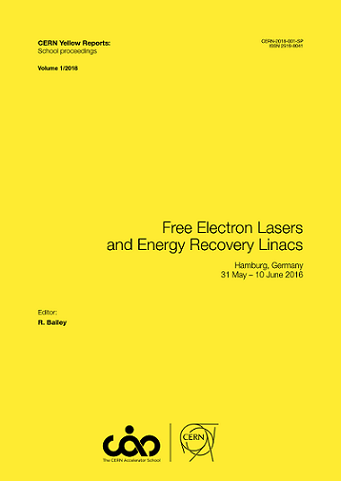Historical Survey of Free Electron Lasers
DOI:
https://doi.org/10.23730/CYRSP-2018-001.195Keywords:
Free Electron Laser, laser, undulator.Abstract
Free electron lasers are presently unique tuneable powerful lasers ranging from the infrared to the X-ray, serving for the exploration of light–matter interaction.They make use of a simple and elegant gain medium. The coherent radiation is generated using free electrons in a periodic permanent magnetic field generated by a so-called undulator as an amplification medium. The light–electron interaction in the undulator leads to a bunching process, setting in phase the electron emitters and establishing a longitudinal coherence. The amplifica-tion of the light wave takes place to the detriment of the kinetic energy of the electrons. First, the origins of the free electron laser, starting from the photon–matter interaction, the early times of synchrotron radiation and the undulator, the development of vacuum tubes, masers, and lasers are introduced. Then, motivated by the search of an exotic laser, the invention of the free electron conceptual idea laser is discussed, with a quantum approach followed by a classical one. The first low gain free electron laser experiments are then presented. Finally, some insight is given in the case of the high gain free electron lasers.Downloads
Published
2018-04-11
Issue
Section
Submission to the proceedings of the CAS2016 – Free Electron Lasers and Energy Recovery Linacs
License
Authors who publish with this publication agree to the following terms:
- CERN retains copyright and publishes the work licensed under the Creative Commons Attribution License 4.0 that allows others to share the work with an acknowledgement of the work's authorship and initial publication in this series.
- Authors are able to enter into separate, additional contractual arrangements for distribution of the published version of the work (e.g., post it to an institutional repository or publish it in a book), with an acknowledgement of its initial publication in this series.
- Authors are permitted and encouraged to post their work online (e.g., in institutional repositories or on their website) prior to and during the submission process, as it can lead to productive exchanges, as well as earlier and greater citation of published work (See The Effect of Open Access).

